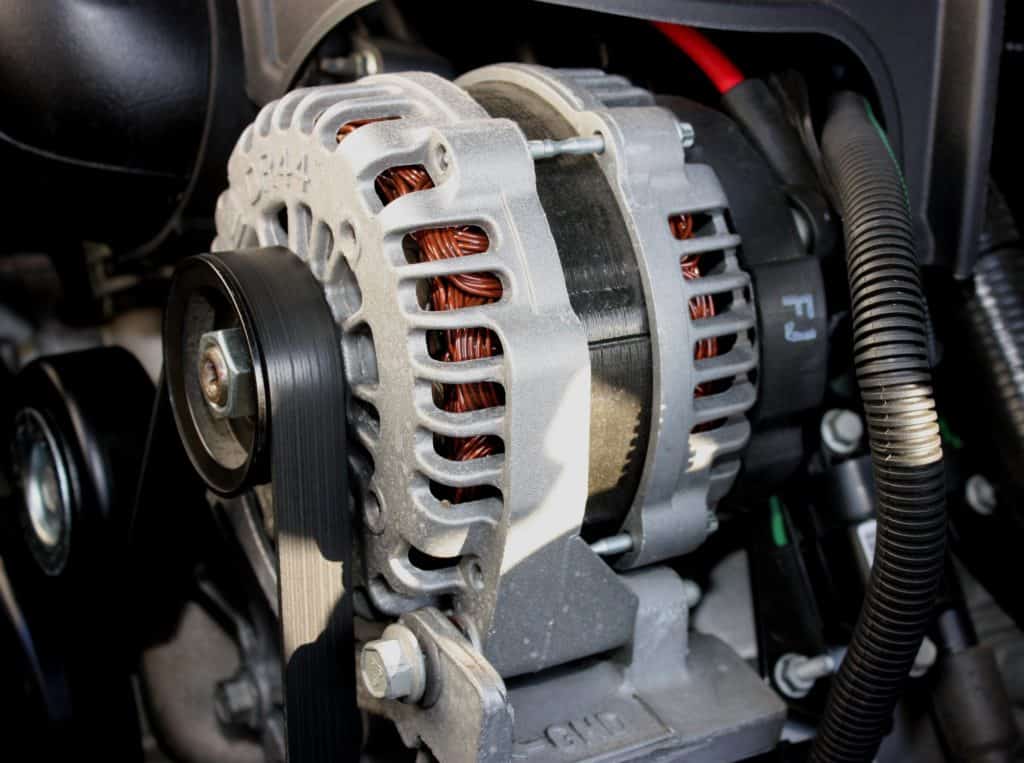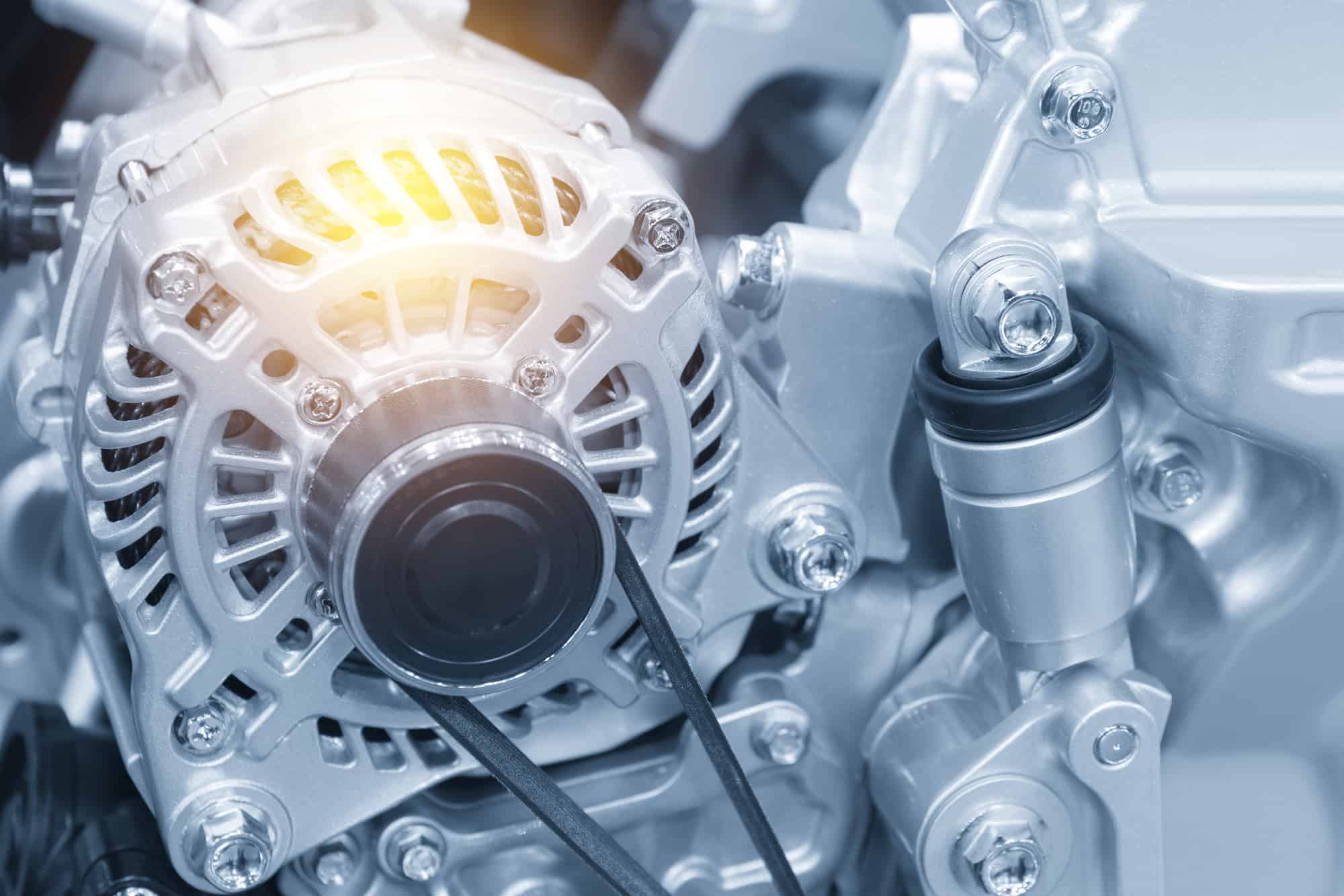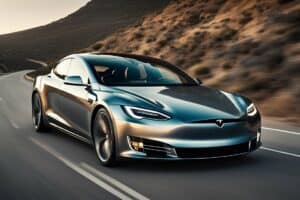Electric cars are becoming increasingly popular as people look for ways to reduce their carbon footprint and save money on fuel. However, many people still have questions about how these cars work and what components they have. One common question is whether electric cars have alternators.
No, electric cars do not use alternators. Alternators are used in traditional gasoline-powered cars to generate electricity by converting the mechanical energy from the engine into electrical energy.
However, electric cars have an electric motor and rechargeable battery instead of an engine, so they don’t require an alternator. Instead, they use inverters to convert the DC power from the battery into AC power that the motor can use
Electric cars need AC current to run efficiently because AC motors are able to convert electrical energy into mechanical energy more efficiently than DC motors.
AC motors have a higher power density, which means that they can generate more power per unit of volume. Additionally, AC motors have a lower resistance, which make them less likely to overheat
Why Don’t Electric Cars Have Alternators?
Electric cars don’t have alternators because they don’t have an internal combustion engine to drive one.
Instead, they use an electric motor to convert electrical energy into mechanical energy to power the wheels.
The battery of an electric car provides power to the electrical components, including the motor, while the car is in use. Electric cars generate electricity through regenerative braking and can also be charged by plugging them into an electrical outlet or a charging station.
What is an Alternator and how does it work?
An alternator is an electrical generator that converts mechanical energy into electrical energy in vehicles with internal combustion engines.
When an engine is running, the alternator charges the battery and supplies additional electric power for the vehicle’s electrical systems. It is comprised of a rotor, stator, rectifier, diode trio, and voltage regulator.

The rotor spins inside the stator creating three separate AC voltages. The rectifier converts the AC voltage to DC voltage, while the voltage regulator controls the output of the alternator to ensure that the battery is not overcharged or undercharged.
Another important part of the vehicle charging system that is missing from electric cars is the serpentine or auxiliary belt.
The auxiliary belt is connected to the alternator and drives the alternator, as well as other components such as the air conditioning compressor, power steering pump, and water pump.
The alternator is responsible for charging the battery and powering the electrical systems in the car, and the auxiliary belt helps to transfer the power generated by the engine to the alternator so that it can perform its function properly.
Without the auxiliary belt, the alternator would not be able to generate the power needed to charge the battery and power the car’s electrical systems
How Do Electric Cars Generate Electricity Without Alternators?
Electric cars can generate electricity while driving without alternators by using regenerative braking. Electric cars can also be charged by plugging them into an electrical outlet or a charging station, however, regenerative braking allows the battery to be topped up while you are driving.
Regenerative braking is a process where the electric motor is used as a generator to convert the kinetic energy of the car’s motion into electrical energy that can be stored in the battery.
When the driver applies the brakes, the electric motor switches to generator mode and slows the car down while converting the kinetic energy into electrical energy.
This electrical energy is then stored in the battery and can be used to power the car’s electrical systems or to drive the electric motor.
Alternative To The Alternator – How Does Regenerative Braking Work?
Regenerative braking works by using the electric motor in an electric car as a generator to convert the kinetic energy of the car’s motion into electrical energy that can be stored in the battery.
When the driver applies the brakes, the electric motor switches to generator mode and slows the car down while converting the kinetic energy into electrical energy.
This electrical energy is then stored in the battery and can be used to power the car’s electrical systems or to drive the electric motor.
When the driver applies the brakes, the electric motor switches from drive mode to generator mode.
In generator mode, the motor uses the car’s kinetic energy to spin its rotor, which generates an electrical current. This electrical current is then sent to the battery for storage.
The electrical current generated by the motor is typically in the form of AC (alternating current), but the battery requires DC (direct current) to charge. Therefore, the electrical current is sent through an inverter, which converts it from AC to DC before it is sent to the battery.
The amount of electrical energy generated by regenerative braking depends on several factors, including the speed of the car, the amount of braking force applied by the driver, and the efficiency of the system.
However, in general, regenerative braking can recover a significant amount of energy that would otherwise be lost as heat during traditional braking.
Which Is Better: Alternators or Regenerative Braking?
One of the reasons why electric cars do not use alternators is that they are not the most efficient way of producing electricity.
Alternators are designed to convert waste rotational energy into electrical energy, and electric cars do not have much waste rotational energy to utilize. Alternators require a constant supply of fuel, which would need to be replenished regularly.
Alternators convert mechanical energy into electrical energy by using a rotating magnetic field to induce an electrical current in a stationary conductor. The efficiency of an alternator is affected by factors such as the speed of rotation, the design of the alternator, the quality of the materials used, and the load placed on the alternator.
At low speeds, alternators are less efficient because the rotating magnetic field generates less electrical power, and the alternator requires more energy to overcome internal resistance.
However, at medium and high speeds, the efficiency of alternators can reach 70-80%. High-efficiency alternators are designed to be more effective at lower speeds because they convert a higher percentage of the mechanical energy produced into electricity.
Overall, while vehicle alternators are not very efficient, they are effective at converting mechanical energy into electrical energy. As a result, they remain an important component of internal combustion vehicles, providing power to the electrical system and charging the battery.
Regenerative braking is generally considered to be more efficient than alternators. Regenerative braking is a system used in electric and hybrid vehicles that converts the kinetic energy produced during braking into electrical energy, which is then stored in the vehicle’s battery.
This system is more efficient than traditional braking systems because it recovers energy that would otherwise be lost as heat.
Alternators are less efficient than regenerative braking systems because they generate electrical power by converting mechanical energy that would otherwise be used to propel the vehicle forward.
Overall, regenerative braking systems are more efficient than alternators because they recover energy that would otherwise be lost and convert it into electrical energy that can be used to power the vehicle.
This is one of the reasons why electric and hybrid vehicles have become increasingly popular, as they are able to use regenerative braking to improve their overall efficiency and reduce their environmental impact.
Could An Alternator Charge An Electric Car?
Technically, an alternator could charge an electric car’s battery, but only in ideal conditions where no energy is lost in the process.
An alternator could technically charge an electric car’s battery, but it would not be practical or efficient due to the laws of thermodynamics. The first law of thermodynamics states that energy cannot be created or destroyed, only converted from one form to another. In the case of an alternator charging an electric car’s battery, the mechanical energy from the engine would be converted into electrical energy by the alternator. However, this conversion process is not 100% efficient, and some of the energy would be lost as heat due to factors such as friction and resistance.
The second law of thermodynamics states that the total entropy of a closed system always increases over time. Entropy is a measure of the amount of disorder or randomness in a system, and in this case, the system is the engine and alternator. As the engine and alternator operate, they generate heat and noise, which are both forms of entropy. This means that the more the alternator operates, the more entropy is generated, and the less efficient the system becomes.
Therefore, while an alternator could technically charge an electric car’s battery, it would not be practical or efficient due to the laws of thermodynamics. It would be much more efficient to use regenerative braking or an external charging source to charge the battery, as these methods do not involve the conversion of mechanical energy into electrical energy and are therefore more efficient.





Given my current understanding that electric cars can’t use alternators like traditional vehicles, I’m considering switching to an electric vehicle. My main concern is around long trips and potential range anxiety. How do electric cars manage long-distance travel without the need for an alternator or conventional refueling?
How efficient is regenerative braking compared to traditional braking systems in terms of energy recovery, and does this efficiency significantly impact the overall energy efficiency of electric vehicles?